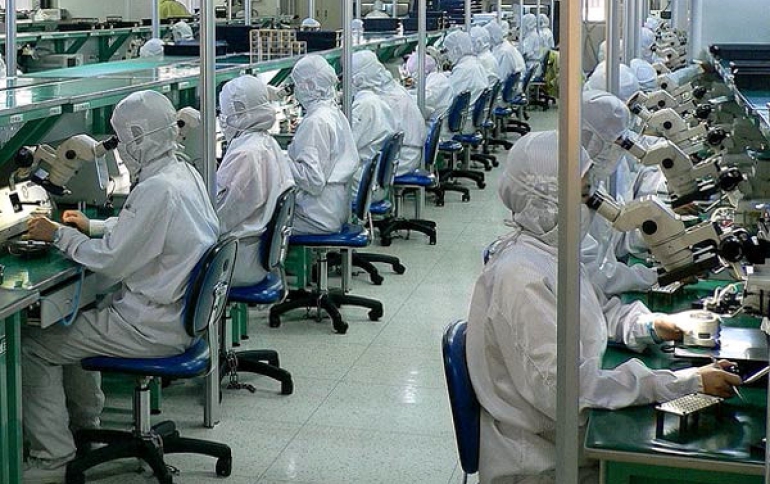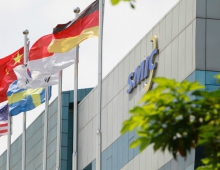
Coronavirus Could Disrupt the Electronics Industry
The growing coronavirus crisis could delay reopening of currently shuttered plants and reduce production of electronics parts such as memories and displays, as well as smartphones and other consumer electronic products.
Chinese city Wuhan—the epicenter of the coronavirus outbreak—is where many electronic products from leading companies are assembled and is also an important China hub for transportation.
Analysts at IHS Markit technology research, a part of Informa Tech, and at IDC said the coronavirus could create supply-chain problems for Apple and other smartphone makers that could disrupt overall shipments.
With Wuhan and other major Chinese cities restricting travel in an effort to contain the virus, factory workers could be prevented from reporting to their jobs in China and Taiwan.
In addition, several Chinese memory suppliers, including Yangtze Memory Technologies Co. (YMTC) and Wuhan Xinxin Semiconductor Manufacturing Corp. have operations in Wuhan. Yangtze Memory Technologies is China’s leading NAND flash memory producer.
YMTC issued a statement this week, saying that it is taking steps to protect employees. It claims that current operations “are normal and orderly.”
However, sources in the Chinese storage industry have criticized foreign analysts’ assessment of the outbreak, characterizing as “speculative” negative predictions that China’s current troubles will benefit U.S. chip manufacturers.
Market research firm IHS Markit says that the coronavirus crisis is also impacting production at display panel factories located in the semi-quarantined city of Wuhan, China, spurring a significant near-term reduction in the global supply of panels used in liquid crystal display televisions (LCDs) and other products.
The five factories in the city producing liquid crystal displays (LCDs) and organic light-emitting diode (OLED) panels will experience near-term slowdowns in production compared to expected levels, according to IHS Markit technology research.
Leading Chinese panel makers stated they believe that total capacity utilization for all LCD fabs in the country could fall by at least 10 percent and perhaps by more than 20 percent during the month of February.
With China expected to own 55 percent of global display manufacturing capacity in 2020, the immediate impact of the production reduction has been a worldwide decrease in availability and an increase in pricing for LCD-TV panels.
“Display facilities in Wuhan currently are dealing with the very real impacts of the coronavirus outbreak,” said David Hsieh, senior director, displays, at IHS Markit technology research. “These factories are facing shortages of both labor and key components as a result of mandates designed to limit the contagion’s spread. In the face of these challenges, top display suppliers in China have informed our experts that a near-term production decline is unavoidable.”
The leading Chinese suppliers of LCD panels for TVs, notebook PCs and PC monitors now are planning to raise panel prices more aggressively. For example, the price for an open-cell LCD-TV panel was originally expected to rise by $1 or $2 per month in February. However, the actual increase may be $3 to $5 for the month.
Notebook and monitor makers might also face panel shortage as a result of coronavirus-related production challenges.
The five display factories in Wuhan are:
- China Star Optoelectronics Technology’s T3 low-temperature polysilicon (LTPS) LCD fab
- CSOT’s T4 Gen 6 OLED fab
- Tianma’s TM8 Gen 4.5 LTPS LCD fab
- Tianma’s TM17 Gen 6 OLED fab
- BOE’s B17 Gen 10.5 LCD fab
Beyond the immediate production impact at these facilities, the coronavirus is also likely to trigger delays in the ramp-up of manufacturing at new display fabs during the first half of 2020. This will reduce overall panel availability during the next few months. It also could result in further panel supply tightness as TV display buyers hasten the pace of their panel purchases to build stockpiles for future shortfalls.
The labor shortage encountered by fabs in Wuhan is partly the result of the Chinese government’s move to extend the Lunar New Year holiday by three days, with the last day now scheduled for Sunday, February 2. The extension is designed to reduce travel and cut down on public gatherings to contain the spread of the disease.
However, even after workers return, many will have to undergo testing procedures to check for contagion. This will have a continued negative impact on productivity.
LCD panel makers outsource much of the production of such modules. However, production at several key third-party module suppliers has now ceased, impacting panel production severely throughout the country. Key module supplier SkyTech is sharply reducing production until mid-February.
Panel makers maintain their own captive LCD module factories. However, these operations are also facing production bottlenecks amid the coronavirus crisis. The module shortage potentially could expand the impact of the contagion beyond China—with a knock-on effect on production at display manufacturers worldwide.
According to DSCC, a market research firm specializing in the display sector, Wuhan has become a major hub for display manufacturing with LCD and OLED fabs either already in production or slated to start production in 2020. DSCC projects Wuhan as accounting for 6% of worldwide mobile OLED capacity, 3% of mobile LCD capacity and 2% of LCD TV capacity, according to the firm’s Quarterly Display Capex and Equipment Market Share Report. Those figures are projected to rise to 9% of mobile OLED capacity and 4% of LCD TV capacity in 2021.
DSCC expects display production disruptions to have a ripple effect on smartphone manufacturers. China Star’s OLED customers include the Motorola Razr phone. Other China Star and Tianma Wuhan OLED customers include LGE and Xiaomi. Wuhan is the only location for China Star’s mobile OLED production and Tianma’s flexible OLED production.





















